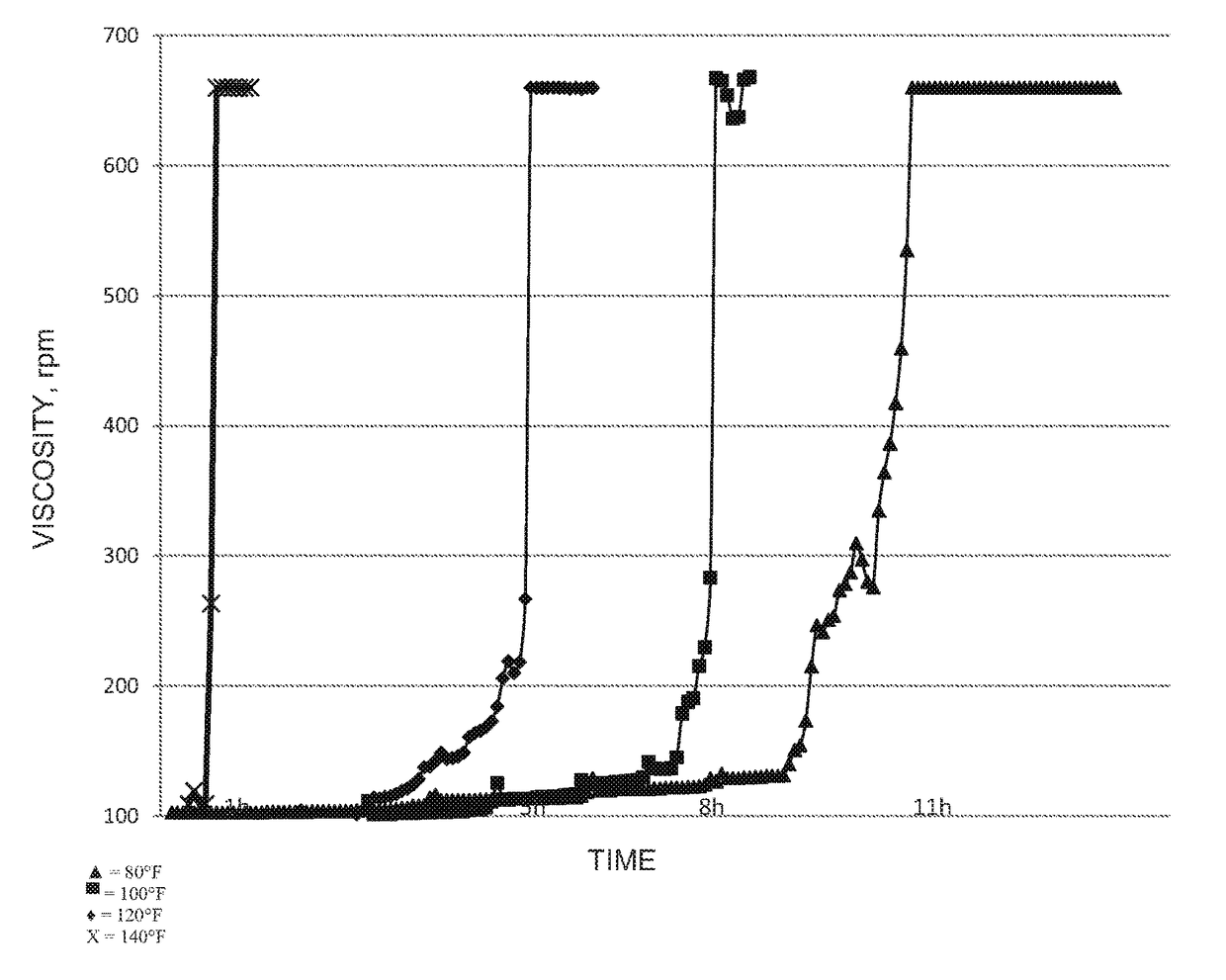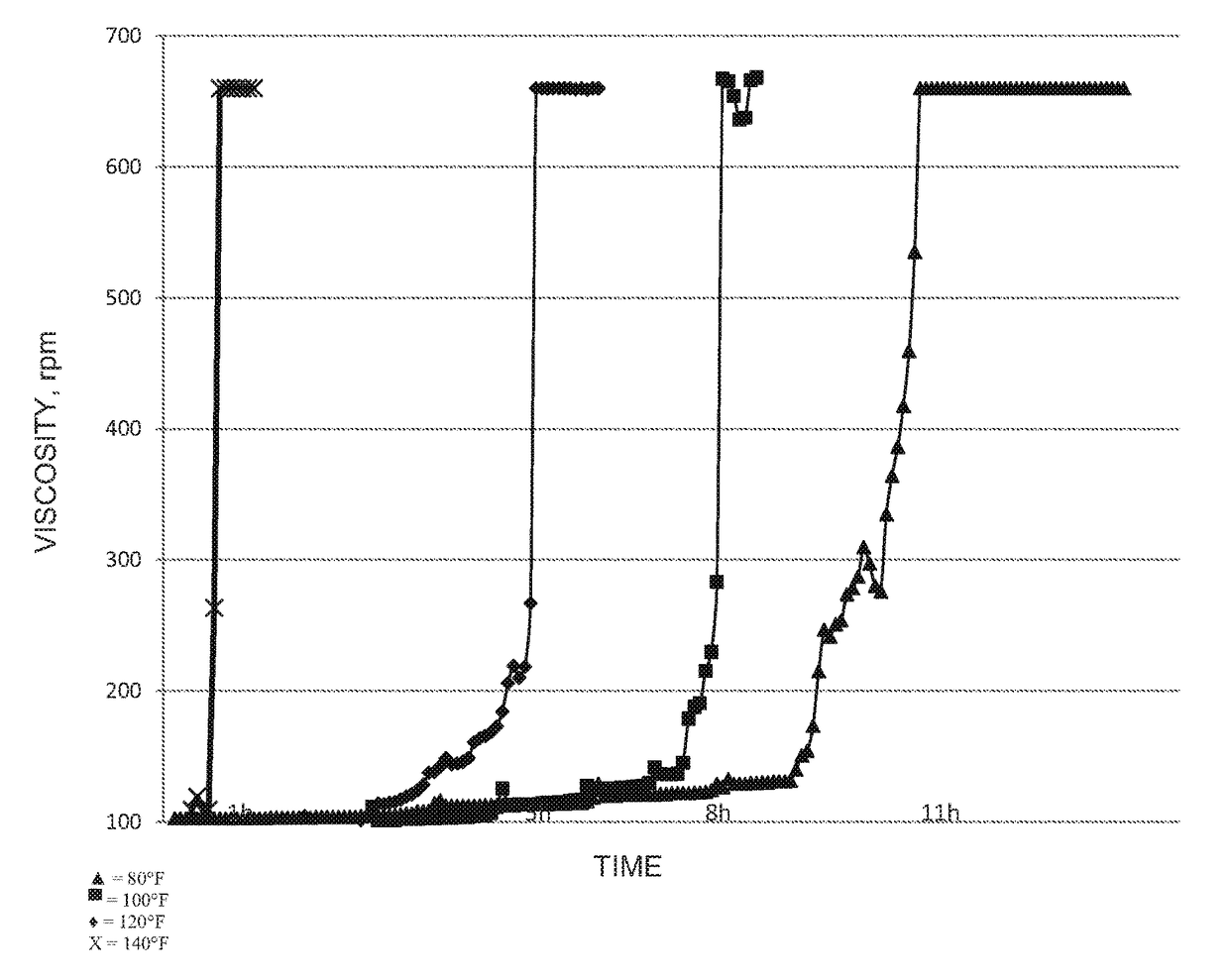Method of forming fluid impermeable plug in a subterranean formation
a subterranean formation and impermeable plug technology, applied in the direction of sealing/packing, wellbore/well accessories, chemistry apparatus and processes, etc., can solve the problems of increasing the cost of well operation, reducing hydrocarbon production, and excessive water production, so as to minimize fluid loss
- Summary
- Abstract
- Description
- Claims
- Application Information
AI Technical Summary
Benefits of technology
Problems solved by technology
Method used
Image
Examples
example 1
[0033]To 500 cc tap water was added, with stirring at 1000 rpm in an overhead stirrer / paddle combination, 25 g of a partially hydrolyzed low molecular weight (about 500,000) polyacrylamide powder having a percent hydrolysis of about 5 to 6 mole percent. This resulted in a 5% by wt. of polymer in tap water. To 200 cc of the polymer solution prepared was then added a 0.8 cc of a 40% solution of glyoxal and the solution was mixed for 1 min in an overhead stirrer. The solution was then transferred to oven or water bath set at different temperatures. The samples were monitored visually at specified times and a gel code was assigned based on the gel code classification set forth in Table I:
[0034]
TABLE IGelCodeGel BehaviorDescriptionANo gelAppears to have same viscosity aspolymer solutionBHighlyAppears to have slightly higherflowing gelviscosity than polymer solutionCFlowing gelMost of the detectable gel flowsto the cap when bottle invertedDModeratelyA gel portion (5-15%) does notflowing g...
example 2
[0037]About 25 g of the same partially hydrolyzed polyacrylamide as Example 1 was added to 500 cc tap water with stirring at 1000 rpm in an overhead stirrer / paddle combination followed by addition of 0.8 cc of a 40% solution of glyoxal. The mixture was then placed in the viscometer and the viscosity of the mixture was monitored at 1 rpm in every 3 minute intervals using a Brookfield LDV-III Viscometer equipped with a #3 LV CYL cylindrical spindle (Brookfield Engineering Laboratories, Middleboro, Mass.) and pump times were determined at 80° F., 100° F., 120° F. and 140° F., as illustrated in FIG. 1 which shows the initial increase in viscosity of the gels due to crosslinking as the gel strength increases from A (initial) to D (moderately flowing gel).
PUM
| Property | Measurement | Unit |
|---|---|---|
| temperature | aaaaa | aaaaa |
| time period | aaaaa | aaaaa |
| temperature | aaaaa | aaaaa |
Abstract
Description
Claims
Application Information
 Login to View More
Login to View More - R&D
- Intellectual Property
- Life Sciences
- Materials
- Tech Scout
- Unparalleled Data Quality
- Higher Quality Content
- 60% Fewer Hallucinations
Browse by: Latest US Patents, China's latest patents, Technical Efficacy Thesaurus, Application Domain, Technology Topic, Popular Technical Reports.
© 2025 PatSnap. All rights reserved.Legal|Privacy policy|Modern Slavery Act Transparency Statement|Sitemap|About US| Contact US: help@patsnap.com


